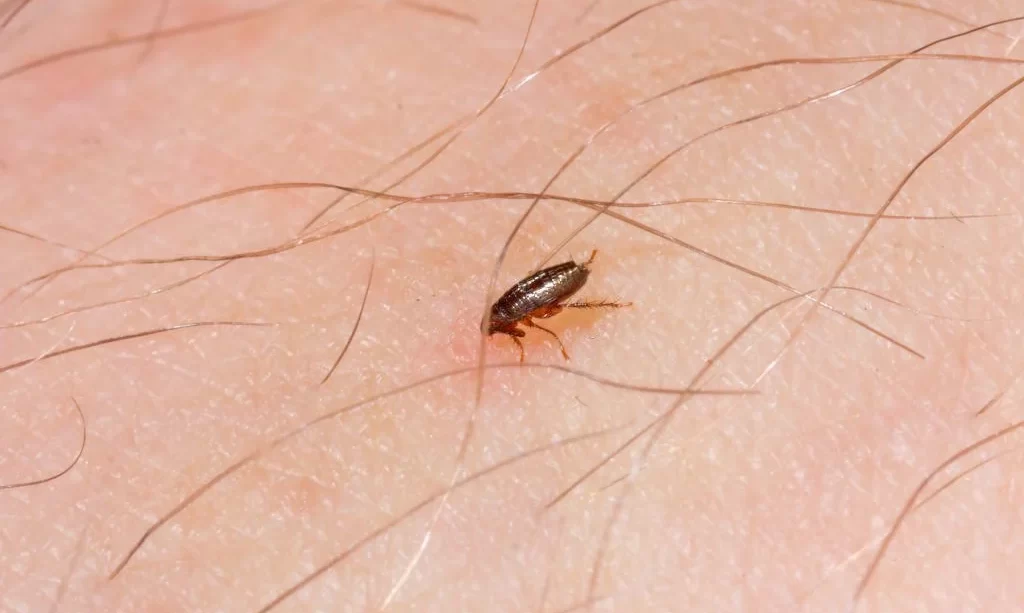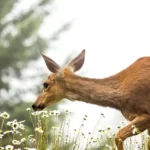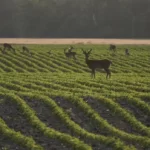Fleas, those minuscule but mighty insects, are notorious for causing havoc in homes, tormenting pets, and leaving humans itching and frustrated. These tiny creatures are relentless in their pursuit of blood meals, and their ability to infest homes and multiply rapidly makes them a formidable foe in the world of pests. Yet, beyond their nuisance factor, fleas harbor a fascinating secret: they are extraordinary jumpers. In this article, we dive into the intriguing world of flea jumps, aiming to uncover the mysteries behind their astonishing leaping abilities.
The question that often piques curiosity is just how far fleas can jump. The answer lies in their unique anatomy and specialized adaptations that allow them to perform feats of agility and speed that seem almost superhuman, considering their diminutive size. Understanding the mechanics of flea jumps not only satisfies our curiosity but also sheds light on their remarkable adaptations for survival. So, let’s embark on a journey to explore the anatomy of fleas and the incredible adaptations that make their jumps possible.
Flea Anatomy and Adaptations
To comprehend the exceptional leaping abilities of fleas, it’s crucial to start with an understanding of their anatomy and the specialized adaptations that set them apart. Fleas possess a body structure finely tuned for jumping, and these adaptations include:
- Powerful Hind Legs: Fleas are equipped with incredibly strong and muscular hind legs, which serve as their primary jumping apparatus. These legs are designed for explosive power and quick propulsion.
- Specialized Joints: The flea’s hind legs feature unique joints that act like miniature catapults. These joints store energy when bent and release it rapidly when straightened, propelling the flea into the air.
- Sensory Organs: Fleas have specialized sensory organs that enable them to detect vibrations and changes in air pressure. These adaptations help them sense the presence of potential hosts or threats, allowing for precise and strategic jumps.
- Reduced Wing Structure: Fleas have evolved to be wingless, shedding the need for flight in favor of jumping prowess. This reduction in wing size contributes to their compact and streamlined bodies, ideal for navigating fur and feathers.
These remarkable adaptations collectively contribute to fleas’ extraordinary leaping abilities. The power and precision of their jumps are critical for their survival, as they enable these tiny insects to quickly move between hosts, evade predators, and reach new feeding grounds. In the following sections, we will delve deeper into the mechanics of flea jumps and explore just how far these agile insects can leap.
The Impressive Flea Leap
Fleas may be small, but their leaping abilities are nothing short of remarkable. Relative to their size, fleas are among the best jumpers in the animal kingdom. They can cover distances that seem almost inconceivable for an insect measuring just a few millimeters in length.
A typical flea jump can propel the insect up to 150 times its body length horizontally and up to 350 times its body length vertically. To put this into perspective, if a human had the same jumping ability, they could leap over a skyscraper. Fleas achieve these astonishing feats in the blink of an eye, making their movements appear almost instantaneous.
Their impressive leaps serve several essential purposes in the flea’s life cycle. They enable fleas to find new hosts for feeding, escape from potential dangers, and navigate the complex terrain of fur or feathers on their host animals. Understanding the mechanics behind these leaps provides insight into their survival strategies.
Flea Jumping Mechanics
The mechanics of flea jumps are a marvel of nature’s engineering. At the heart of their extraordinary jumps are their powerful hind legs and specialized joints. When a flea prepares to jump, it contracts its leg muscles, storing potential energy in the process. This energy is then released in an explosive burst, causing the flea’s leg joints to straighten rapidly.
The rapid straightening of the leg joints acts like a catapult, propelling the flea into the air. This process happens so swiftly that it’s challenging to perceive with the naked eye. In just a fraction of a second, a flea can reach heights many times its body length.
Additionally, fleas can adjust the angle and force of their jumps to control both the direction and distance they travel. This adaptability allows them to navigate complex environments efficiently.
Factors Influencing Flea Jumping
While fleas’ jumping abilities are undeniably impressive, they can be influenced by various environmental factors. Temperature, humidity, and surface texture can all impact a flea’s jumping performance.
- Temperature: Fleas tend to jump more efficiently in warmer temperatures, as their muscle function is more optimal in these conditions. Cooler temperatures can decrease their jumping prowess.
- Humidity: Fleas are sensitive to changes in humidity. In low humidity environments, their exoskeletons can become brittle, potentially affecting their ability to jump effectively.
- Surface Texture: The texture of the surface a flea is jumping from can also affect its jump. Smooth surfaces may provide better traction and allow for more powerful jumps compared to rough or uneven surfaces.
Understanding these environmental factors can be valuable for pest control and prevention strategies. Effective management of temperature and humidity can impact the comfort of both pets and humans in flea-prone environments.
In the next section, we will explore the role of flea jumps in infestations and their impact on hosts and households.
The Role of Flea Jumps in Infestations
Flea jumps play a pivotal role in the life cycle of these tiny insects, and understanding this role is crucial for those dealing with flea infestations. Fleas are not only agile jumpers but also adept at using their jumping abilities strategically, particularly when it comes to infesting homes and affecting hosts.
- Host Finding: Fleas primarily rely on their jumping abilities to find hosts for their blood meals. When an animal or human passes by, fleas can detect vibrations and changes in air pressure, alerting them to the potential presence of a host. They then use their powerful hind legs to make precision jumps onto their unsuspecting target.
- Host Movement: Once on a host, fleas continue to utilize their jumping prowess to navigate the host’s fur or feathers. Their jumps allow them to move quickly and efficiently, finding optimal feeding spots and avoiding potential threats like grooming behavior from the host.
- Environmental Navigation: Fleas can also use their jumps to move between hosts and navigate the environment. They might leap from a pet to furniture or carpets, which can contribute to home infestations. Their ability to move between different environments makes them a challenging pest to control.
Understanding how fleas use their jumping abilities in the context of infestations is crucial for effective flea control strategies. Homeowners and pet owners must take steps to prevent infestations and address them promptly if they occur.
Conclusion
In the world of tiny insects, fleas stand out not only for their nuisance but also for their incredible jumping abilities. These agile creatures, with their powerful hind legs and specialized joints, can achieve leaps that seem astonishing given their size. Flea jumps are not merely a curiosity; they are a vital aspect of the flea’s survival and infestation strategies.
By uncovering the mechanics and factors that influence flea jumps, we gain valuable insights into how these pests operate. This knowledge can empower homeowners and pet owners to take proactive measures to prevent and address flea infestations effectively. Whether you’re marveling at their agility or seeking ways to protect your household from these persistent pests, understanding the role of flea jumps is a step toward achieving a flea-free environment.



